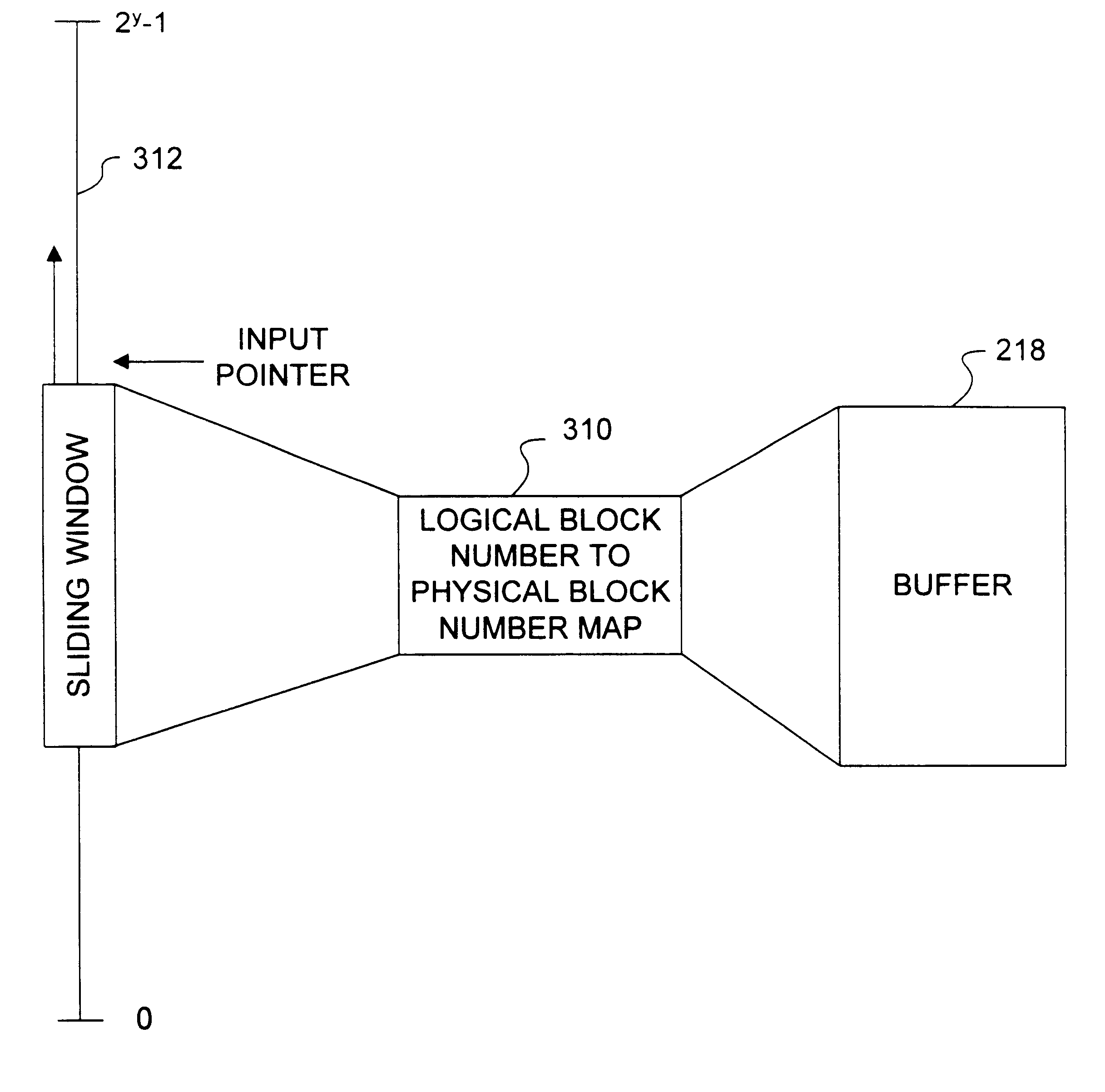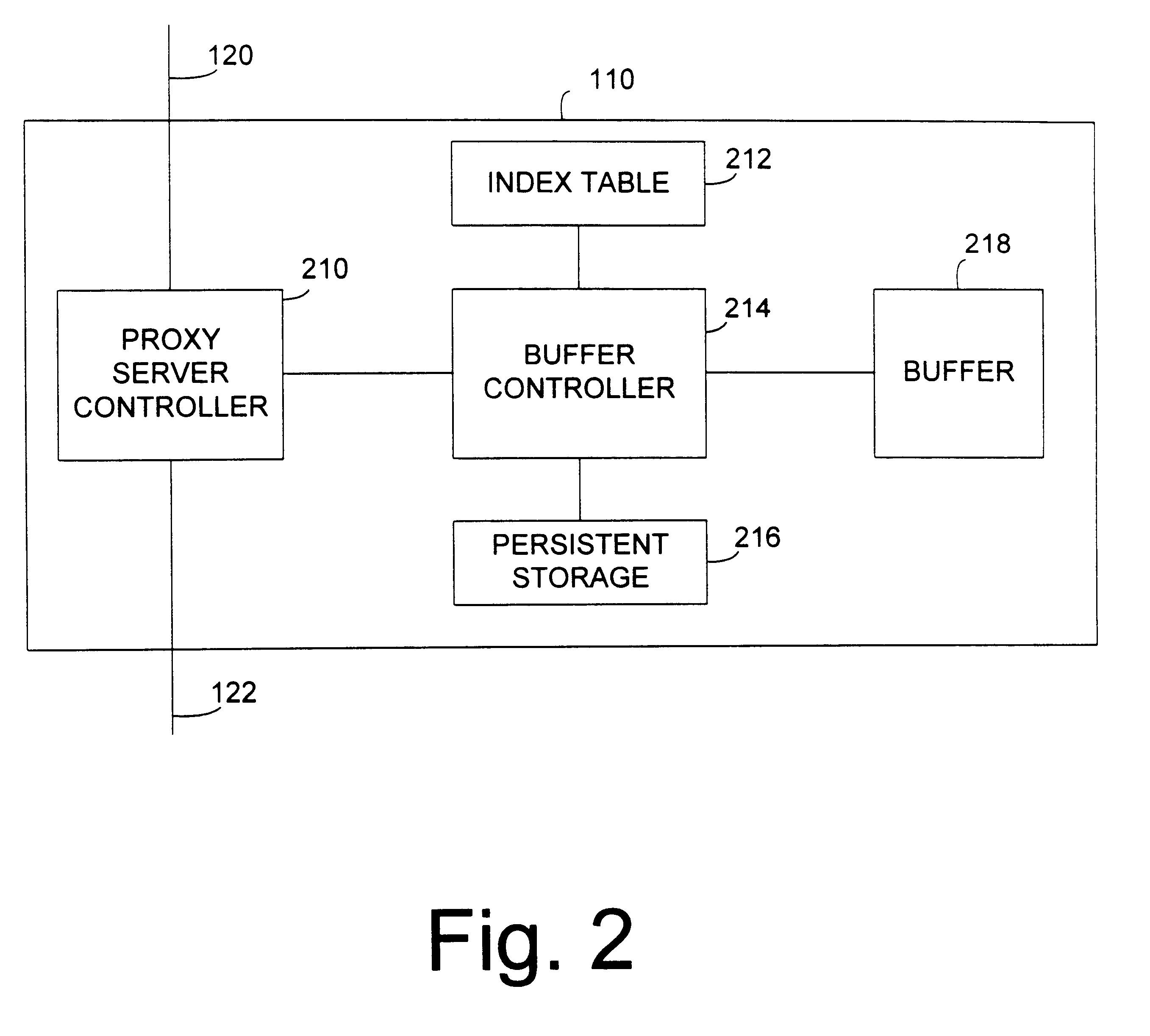Apparatus and method for providing a cyclic buffer using logical blocks
a logical block and buffer technology, applied in the field of buffers, can solve the problems of information being overwritten, inability to allocate an area, and inefficient use of buffer space,
- Summary
- Abstract
- Description
- Claims
- Application Information
AI Technical Summary
Benefits of technology
Problems solved by technology
Method used
Image
Examples
Embodiment Construction
Systems and methods consistent with the improved cyclic buffer disclosed herein use an index to map consecutively numbered logical blocks to physical buffer blocks of a cyclic buffer. The index to the cyclic buffer is implemented using the logical block numbers. When new information is added to the cyclic buffer, the next logical block number is assigned to the information. The new logical block number corresponds to a physical cyclic buffer block. The new logical block number and key associated with the information are then added to the index. The mapping of logical block numbers to physical block numbers may simply be a mathematical formula that defines the relationship between the logical block numbers and physical block numbers.
To retrieve information from the cyclic buffer, the index is first scanned to determine whether an index entry exists that has a key associated with the information. If such a key is present, the entry is accessed to determine the logical block number ass...
PUM
 Login to View More
Login to View More Abstract
Description
Claims
Application Information
 Login to View More
Login to View More - R&D
- Intellectual Property
- Life Sciences
- Materials
- Tech Scout
- Unparalleled Data Quality
- Higher Quality Content
- 60% Fewer Hallucinations
Browse by: Latest US Patents, China's latest patents, Technical Efficacy Thesaurus, Application Domain, Technology Topic, Popular Technical Reports.
© 2025 PatSnap. All rights reserved.Legal|Privacy policy|Modern Slavery Act Transparency Statement|Sitemap|About US| Contact US: help@patsnap.com



